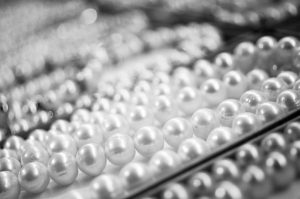Traditional Indian Jewellery Explained

Indians have a penchant for jewellery. Since time immemorial, the people in the country used adornments as part of their wardrobes. Even the ancient people from the Indus Valley civilization reportedly had beaded jewellery 5000 years ago.
Men and women depicted in the sculptures at Sanchi, Bharhut, Amaravati, and the paintings seen at Ajanta feature the ornaments worn by both men and women of all social standings.
Even the legendary epics like the Ramayana and the Mahabharata also mention the intricate art of jewellery making. Because of this, modern-day Indians may pick up the love for adornments in their outfits.
There are many places to get well-crafted jewellery in any part of the country. Some of the best diamond jewellery in Kerala and other areas are available anywhere. Here are some of the most traditional jewellery pieces that you can find all over the country.
Sarpech
This elaborate head jewellery called Sarpech comes from Rajasthan. It is prevalent to see uncut diamonds and long emerald drops in this type of jewellery.
On top of it is a paisley crest while embellished Jaipur enamel serves as the cover for the back portion of the head jewellery. Moghul emperors helped in popularizing the use of uncut stones in the accessories, and the trend passed onto future generations until the modern-day.
Vanki
Locals in South India beautify their arms using the Vanki. The design of this armlet uses rose-cut diamonds, emeralds, and cabochon rubies to form an image of coiled snakes on the lower portion of the gold jewellery. It also features two parrots at the top and is finished off with a traditional lotus-motif pendant.
While there are different types of armlets worn in various places in India, the Vanki stands out from the rest because of its inverted V-shaped design.
The ones filled with precious stones are trendy, which is why some believe that they are the best diamond jewellery in Kerala. Even Lord Krishna features an image wearing this ornament on the arm when he was a child.
Linga Padakka Muthu Malai
The Linga padakka muthu malai is another highly intricate piece of jewellery that showcases the Lingam, known as the symbol of Shiva. It features multiple rows of pearls attached to the Lingam pendant made from an emerald.
The necklace comes in an ornate bejewelled base supported by a couple of gem-crusted peacocks. Based on ancient beliefs, flawless pearls can prevent misfortune. This jewellery is the reason why most Indian rulers want to own pearls.
The medieval courts of Thanjavur and Vijayanagar in South India reportedly hold significant numbers of pearl necklaces during their reign.
Nath
The signature nose-ring from Maharashtra is made from diamonds and set in a cluster of pearls shaped like flowers. The design traditionally features a single bead made from ruby.
While there is almost no reference about nose jewellery in ancient Hindu history, the use of this kind of ornament can go as far back to the 9th or 10th century AD. In modern times, this ornament has become a part of the bride’s trousseau. All married women also need to wear this after their wedding.
These are just a few of the most traditional jewellery items seen in India. The creation of these jewellery pieces uses the conventional way. Meanwhile, other jewellery makers incorporate more contemporary designs for their modern clients.
Whatever be the design that Indians choose, it still proves that people from this country love their jewellery as a part of their culture.






